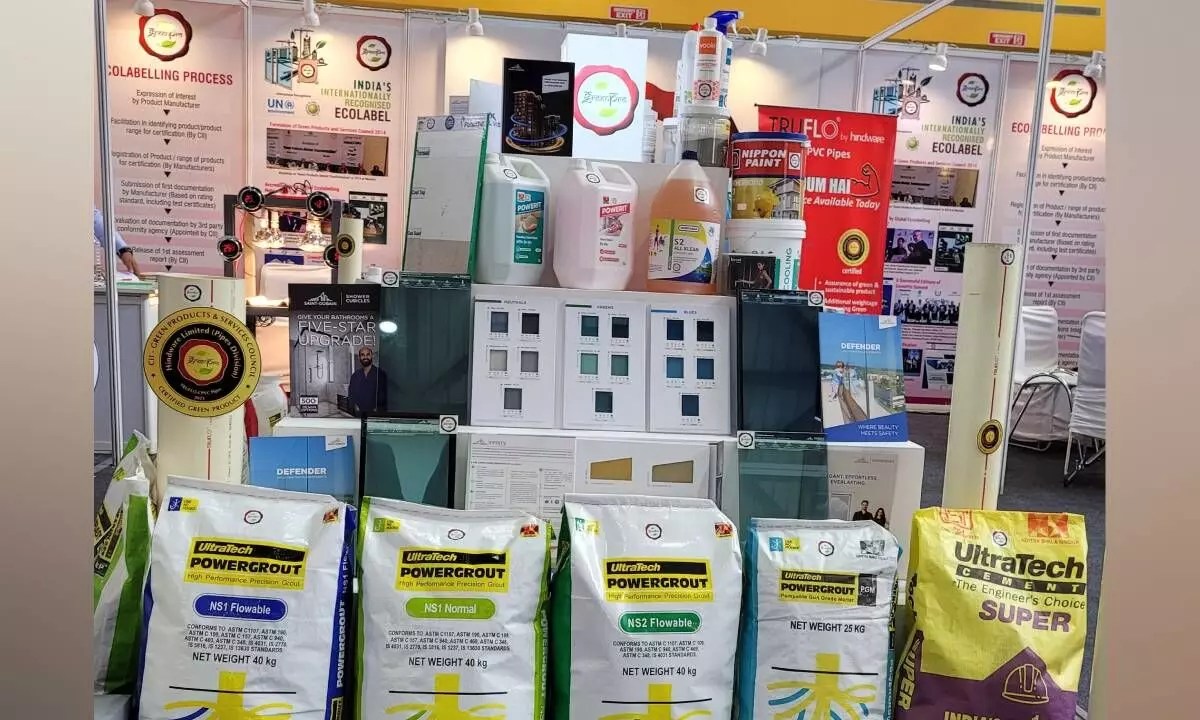Over 95% construction materials available in ‘green product’ category
More than 6,600 products from about 275+ companies are certified by GreenPro
image for illustrative purpose

Hyderabad With an aim to promote sustainable products and practices, the Confederation of Indian Industry (CII) has established ‘GreenPro’, an ecolabel-based on life cycle approach, in 2015. Over the past few years, more than 6,600 products from about 275+ companies were certified with the GreenPro ecolabel. This number is expected to grow continuously in the coming years.
The CII recognised the urgent need for environmental-friendly products and services to combat the challenges of climate change and resource depletion. GreenPro was initiated, aiming to identify, certify, and promote products and technologies that meet stringent sustainability criteria. Since its inception, GreenPro has been actively engaged in refining its standards and guidelines for product certification.
Collaborating with industry experts, environmentalists, and policymakers, GreenPro has continuously updated its criteria to ensure they remain relevant and comprehensive. The ecolabel covers a wide range of sectors, including construction materials, automotive steel, copper tubes, consumer electronics, renewable energy systems, and more.
Along with the Indian Green Building Council (IGBC), a part of the CII, GreenPro facilitates the architects, developers and builders to choose the right green products, materials and technologies for contribution, operation and maintenance of green buildings. Over 95 per cent of building materials are currently available in green product category, said KS Venkatagiri, Chairperson, GreenPro India.
He adds, “With rise in prices of building materials, the biggest challenge being faced by the Indian real estate sector is higher cost of construction. Adopting sustainable models of construction does not involve guidelines on wise use of resources only; its effects are far-fetching. The better utilisation of building material is a major factor, which translates into better margins.”
Venkatagiri is also the Executive Director of CII – IGBC. He is an expert in green concepts and is leading a team of over 90 green professionals. Under his leadership, the centre is offering services to Indian industry in the areas of green buildings, green companies, green products, energy management, renewable energy, and other related sectors.
“GreenPro has come out with a methodology called green product rating. It certifies all building materials including cement, steel, glass, tiles, aluminum panels and paints. As per an international methodology, we evaluate the overall environmental impact of the product in its entire lifecycle and whichever stands lower that will be rated as green product,” he informed.
The ecolabelled green products contribute significantly for enhancing the performance of green buildings in terms of reducing resource consumption and enhancing the health and well-being of the occupants. These products contribute to green buildings in areas such as energy efficiency, indoor environment quality, water & waste management and sustainable soils.
Speaking about the cost of the green products, Venkatagiri says: “Initially, when these materials are converted into a green product, it may become slightly expensive at a premium of 5 per cent and above. Once the manufacturers start producing continuously, the cost comes down. In case of green cement, the addition of fly ash is higher and the overall cost comes down when compared to regular cement.”
He adds, “Now, the vendors are selling green products at the same rate or slightly higher prices. There is no extra price but the only difference is they get an additional market. After getting certified as green product, Nippon Paint was able to achieve a large share of the market within a short period of time. Even public works departments are prescribing ecolabelled products as the criteria for procurement.” The ecolabelled products are mostly ordered by the builders, developers, industrial users and business persons in the country. Among them, the response for green products is good. However, there was no much awareness among the independent home buyers. To reach that stage, it may take time. GreenPro is slowly entering into the consumer segment.
Along with the environment and cost benefits, the users of green products have many advantages including additional demand in domestic and international markets. These products are accepted across 37 countries where the GreenPro has a strong ecolabelling network. Also, there is a positive impact of these ecolabelled products on the health and well-being of the end-users.

